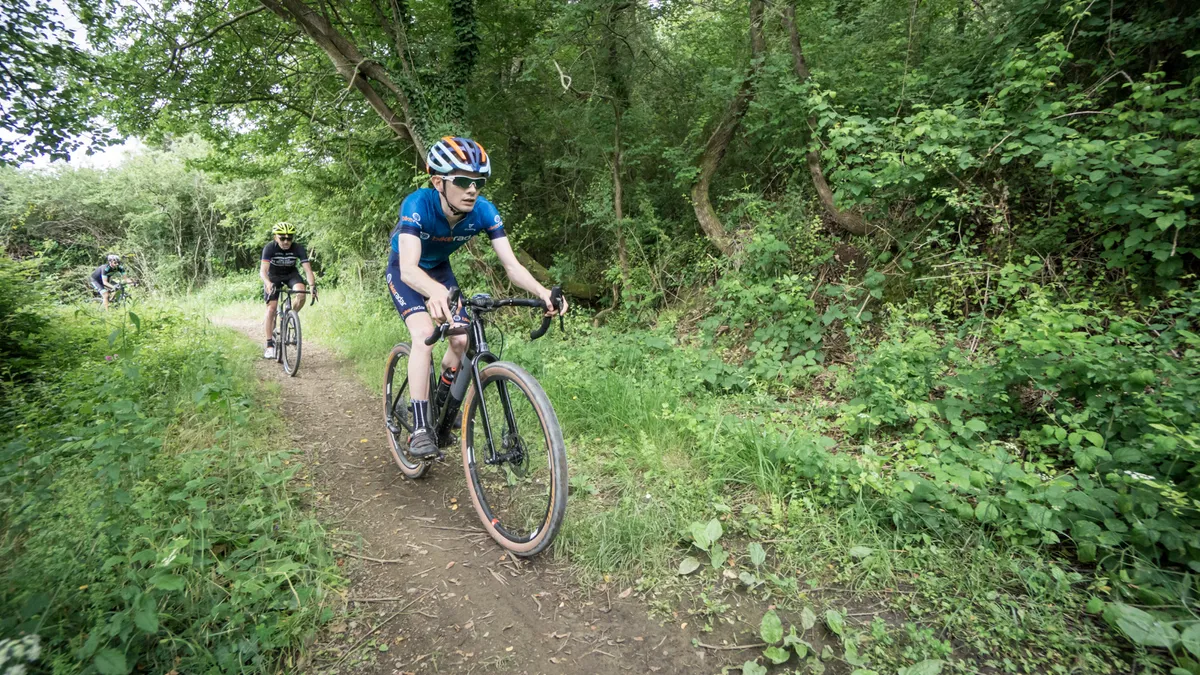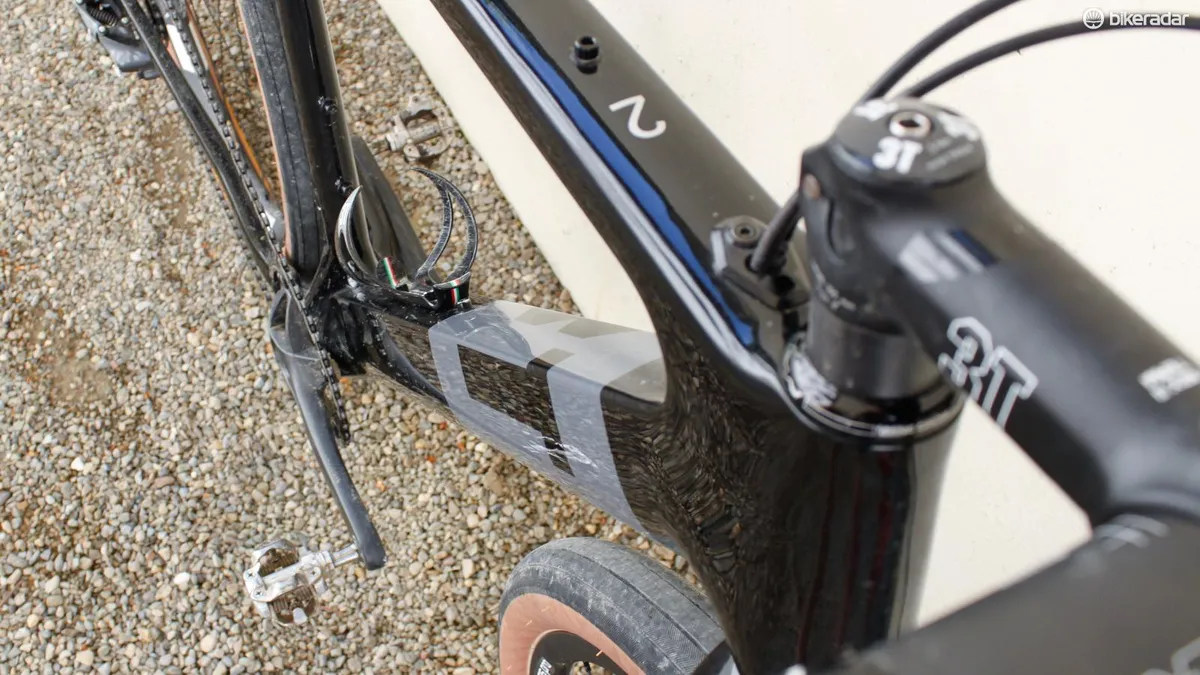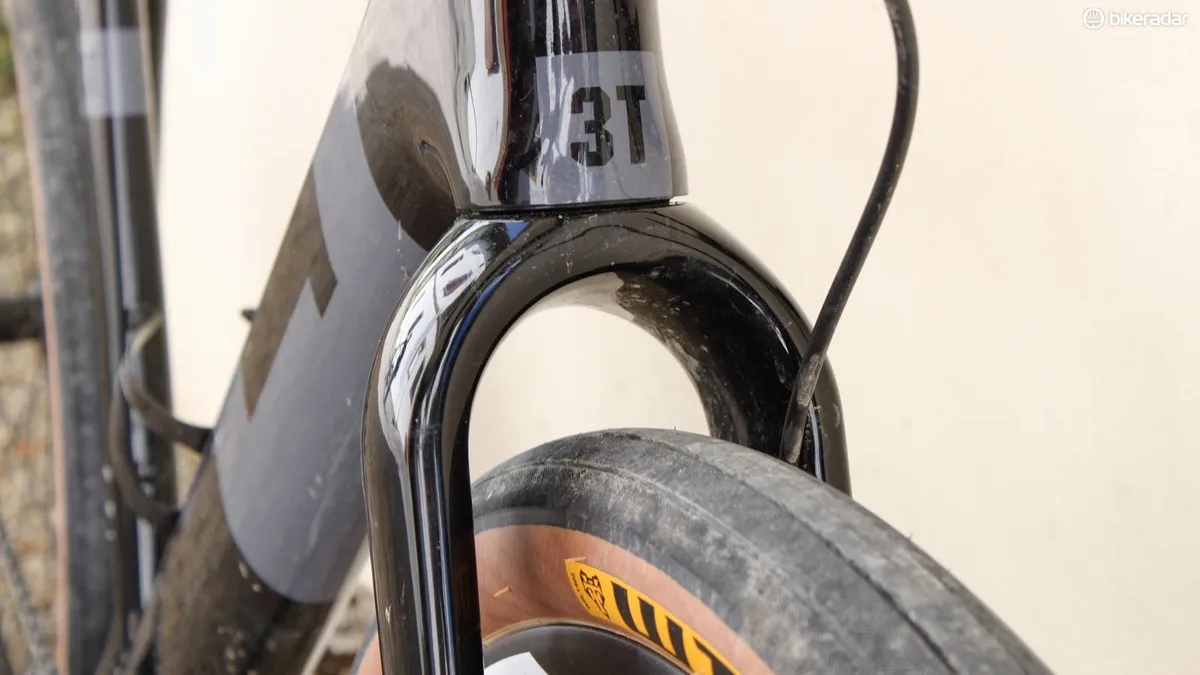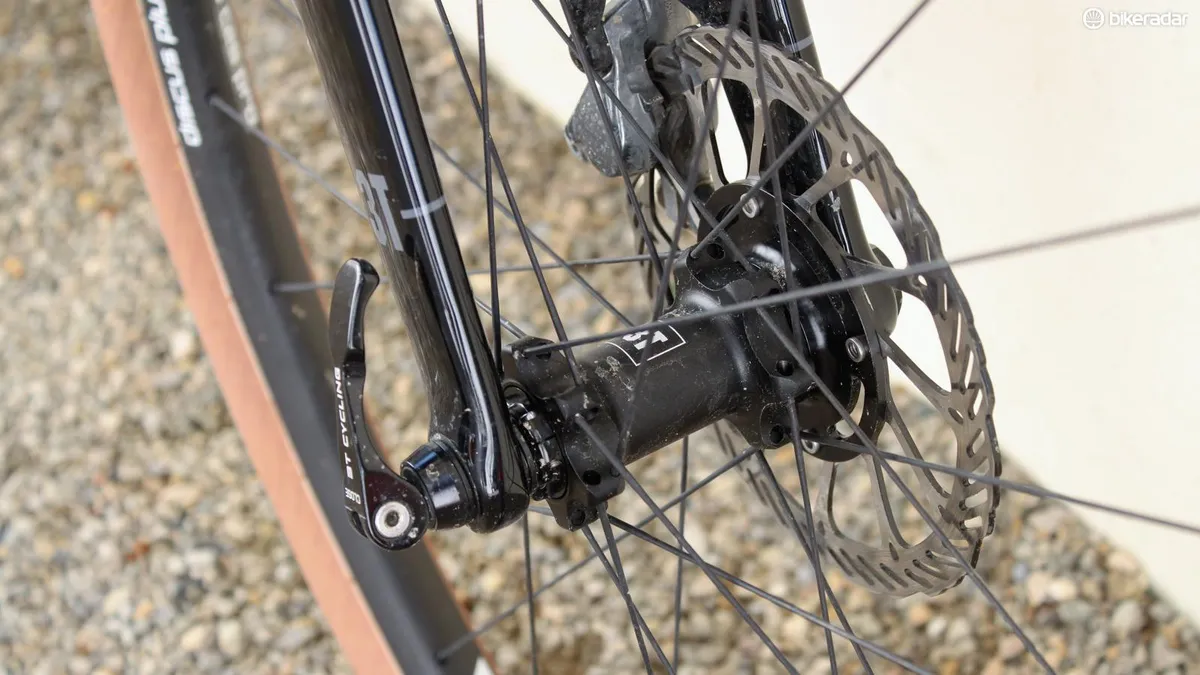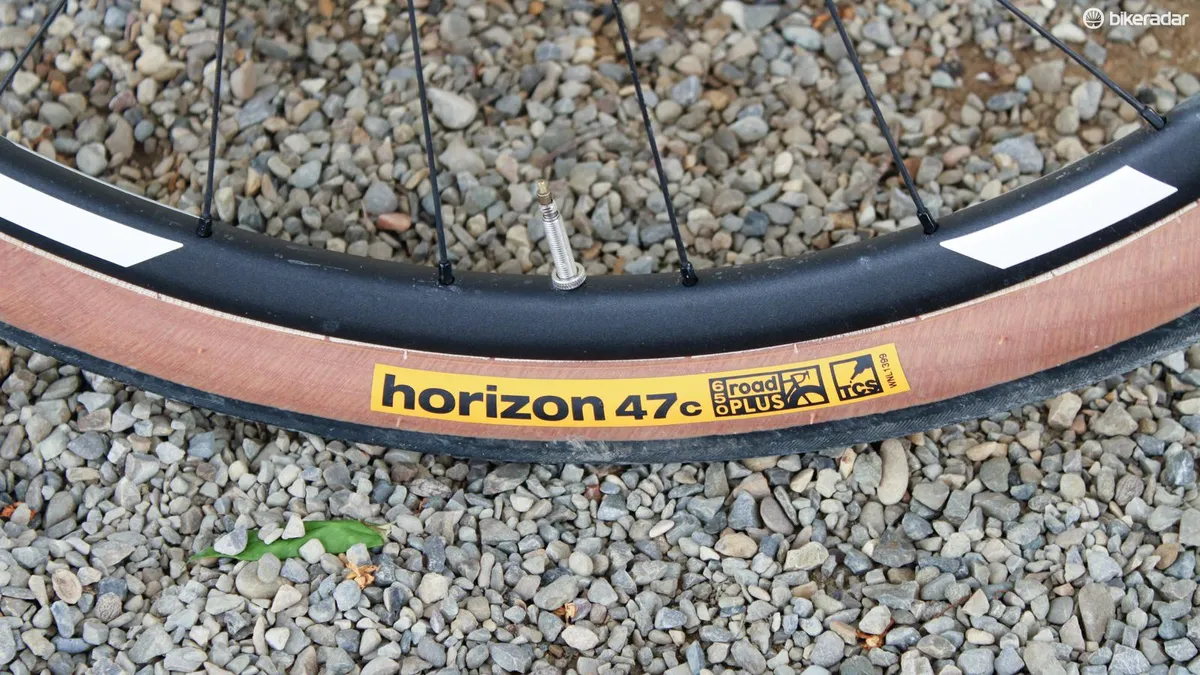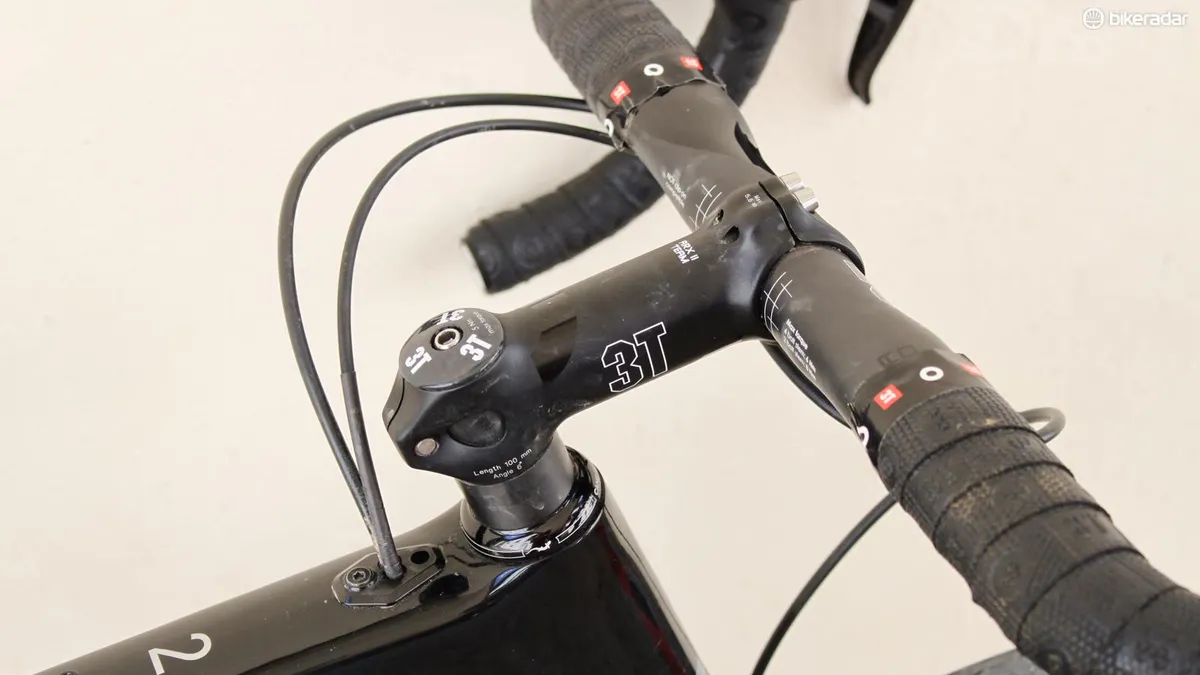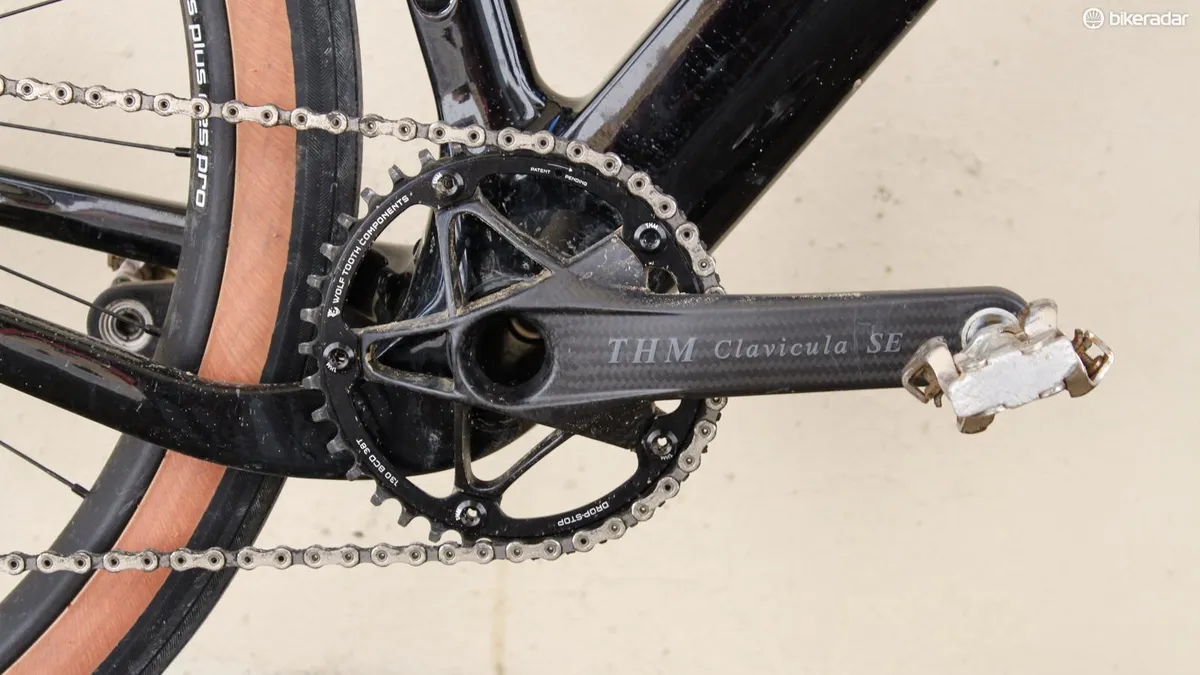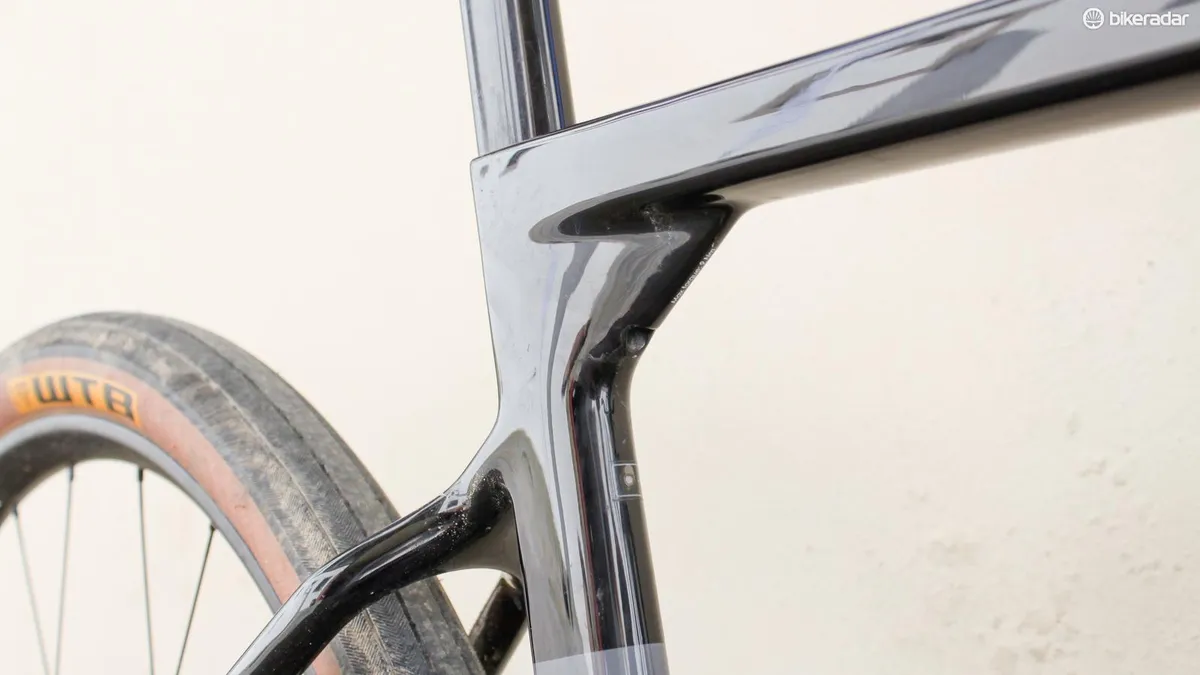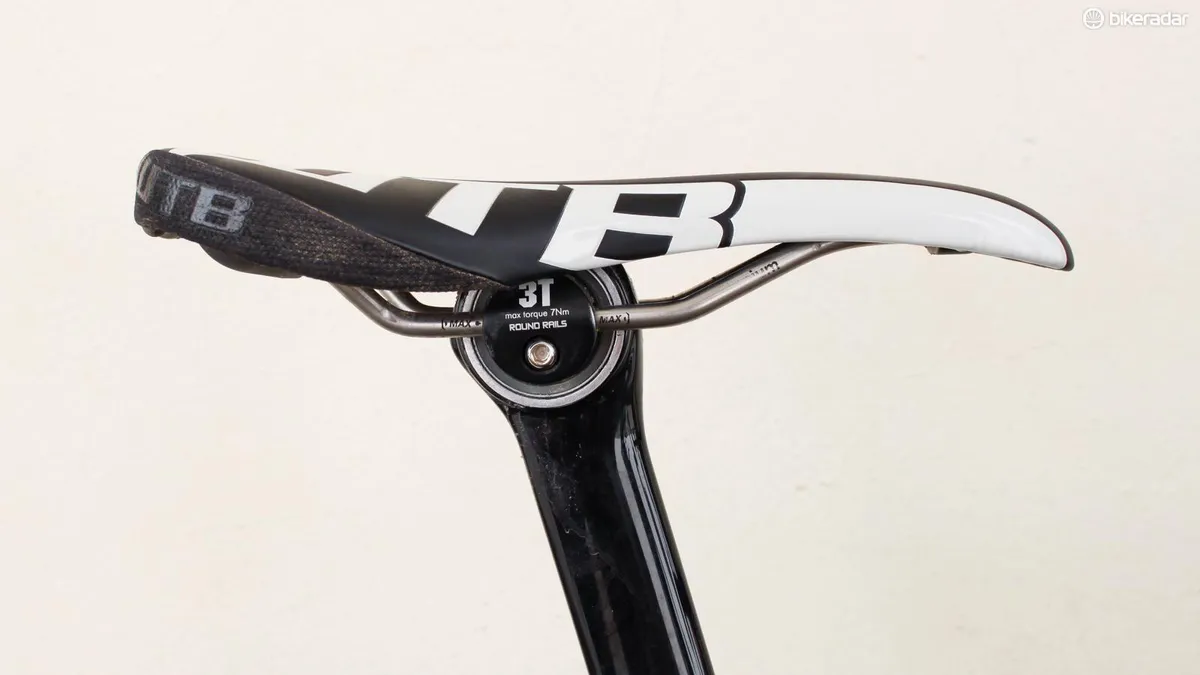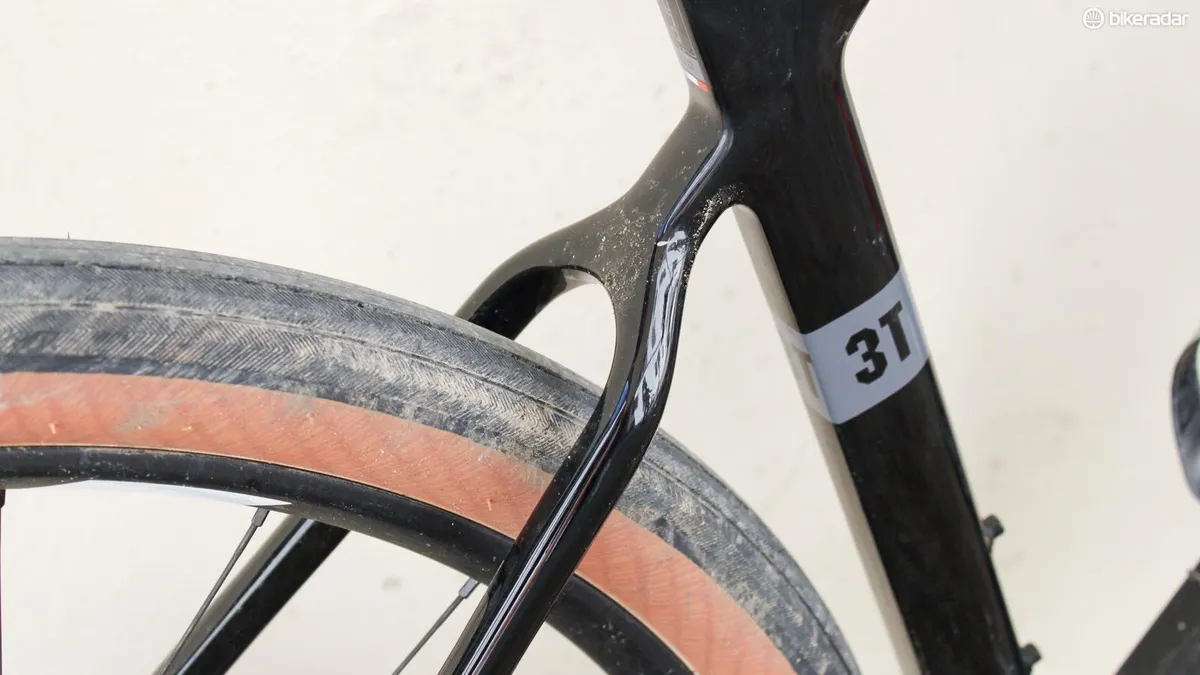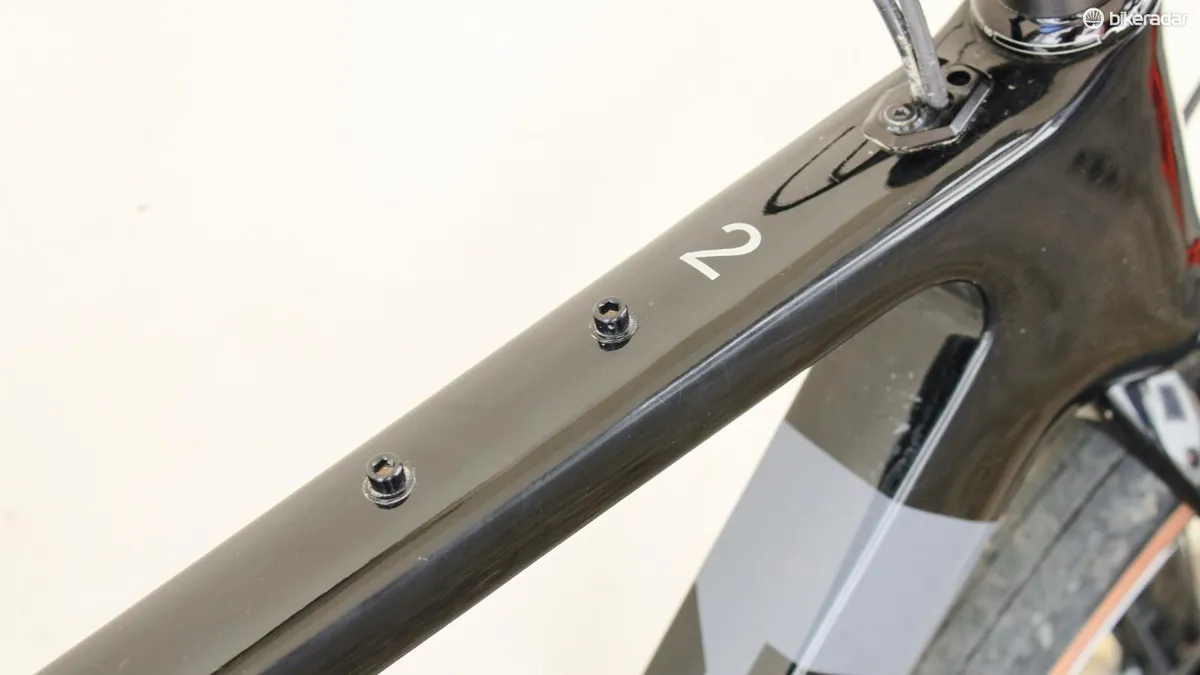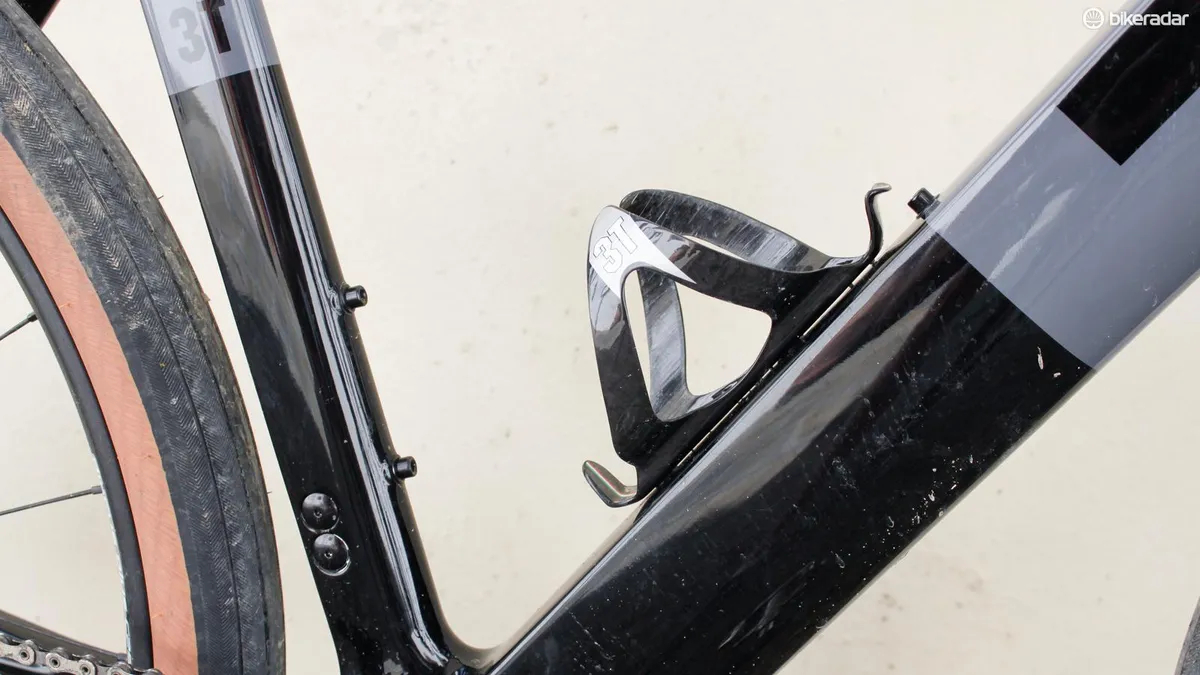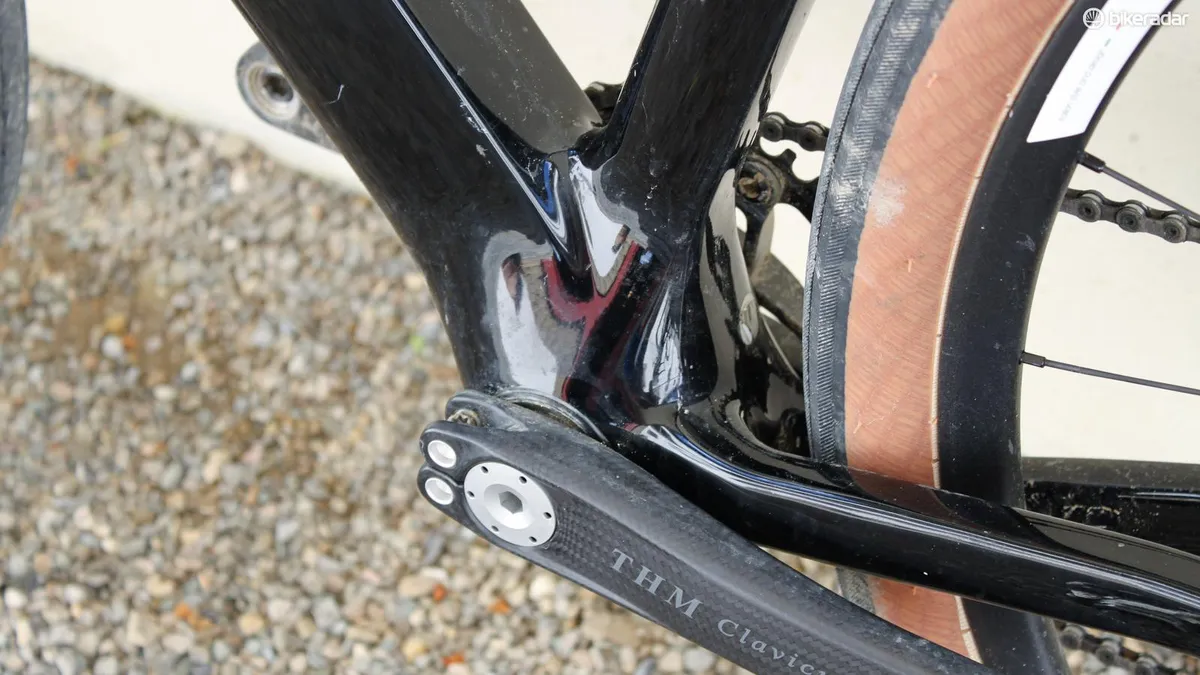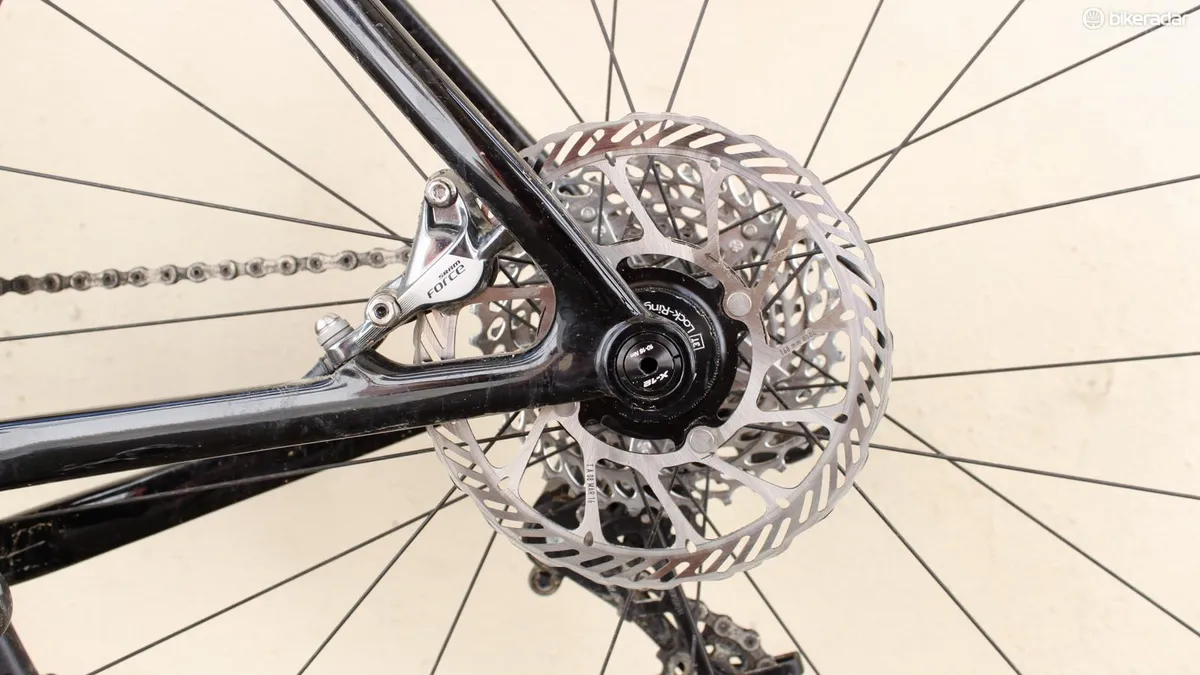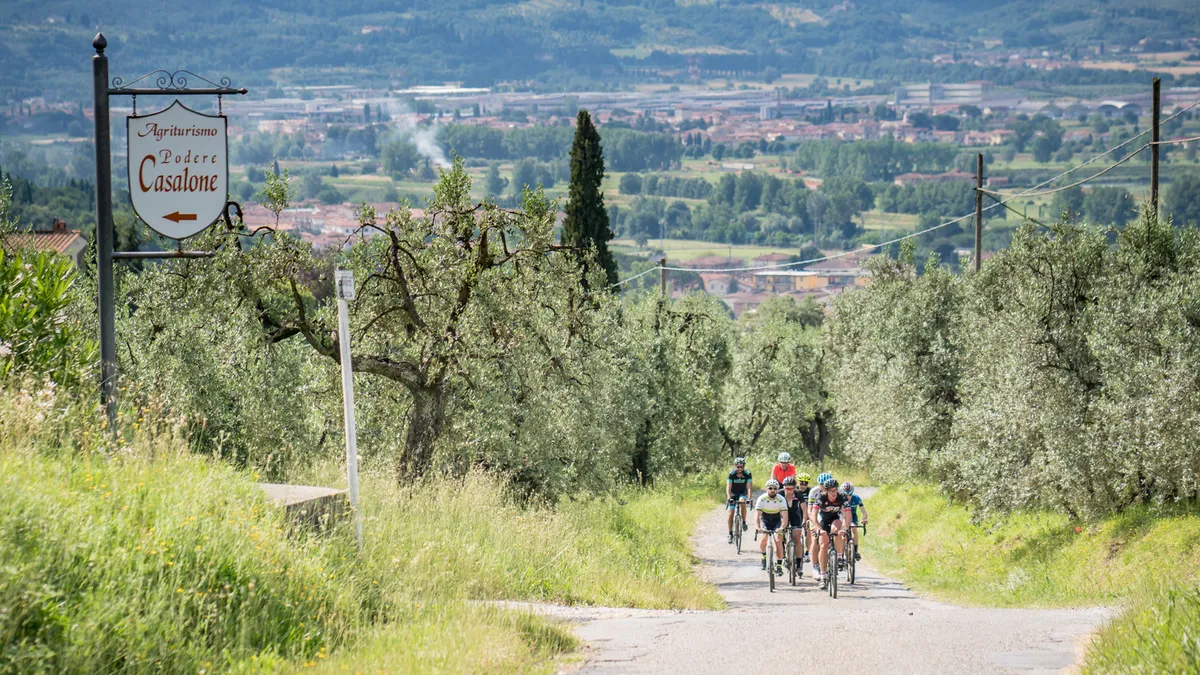I don’t really understand the 3T Exploro, but I think I like it.
The Italian brand launched its first ever bike a few days ago in Tuscany, Italy, inviting me along for the ride. Billed as the world’s first aero gravel bike, the Exploro is the brainchild of ex-Cervelo designer Gerard Vroomen, a man who’s always been keen to push the boundaries of bicycle engineering. It’s a disc brake-equipped, fat-tubed thing, the bastard offspring of a road bike and an XC racer. I don’t really know what to call it, but 3T favours “GravelPlus” or (ugh) “Gravel 2.0”. If anything, I think the ‘monstercrosser’ moniker of a few years ago might be more appropriate.
- 3T jumps the gravel gravy train with first-ever bike and two new wheelsets
- 3T and THM join forces
- Top 5 gravel bikes of 2016
Frameset: huge clearances, quirky geometry and aero tweaks
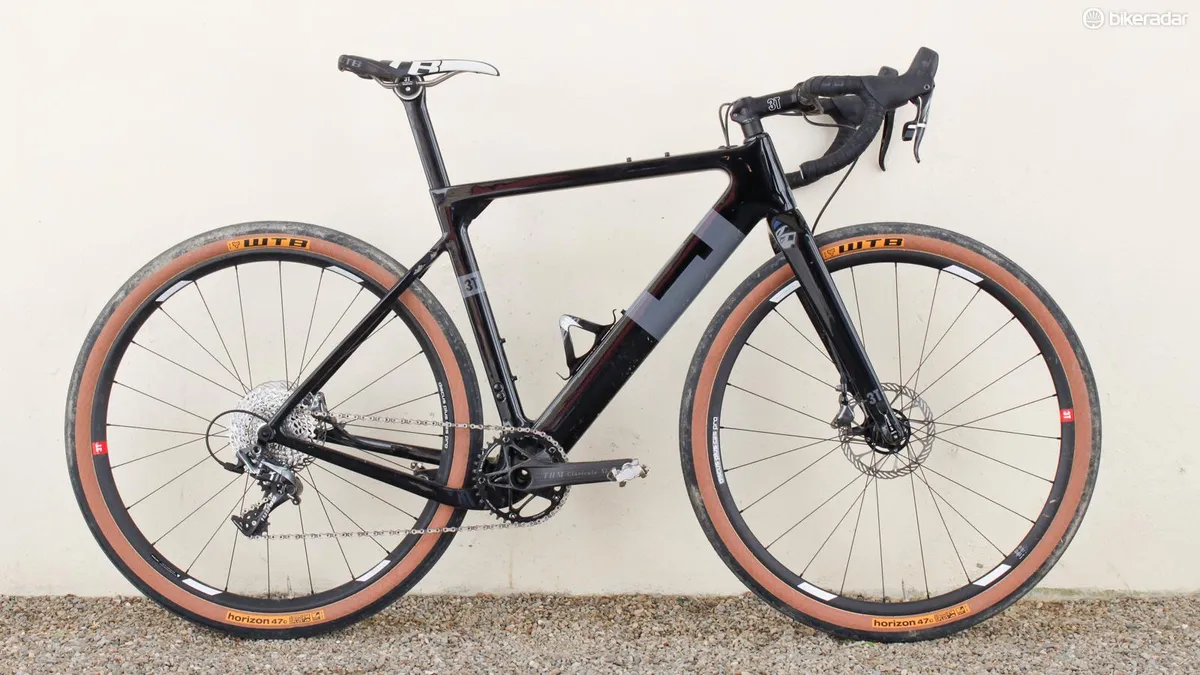
If you ignore the immense amount of room between the stays and the fork legs, and a few other details, the Exporo’s frameset carries all the hallmarks of a modern road bike. Its carbon tubes are thin-walled, sculpted for both aero and comfort, and with all cables and hoses routed internally, it’s a clean piece of design. The down tube and bottom bracket are gargantuan, and along with the seat tube and seatpost, the former has a truncated aerofoil profile – what 3T calls 'Sqaero' (square and aero).

Out back, the seatstays are dropped in familiar fashion for better rear-end compliance, while the driveside chainstay has a pronounced kink to create sufficient clearance for both the cranks and that big rubber. Speaking of chainstays, they're quite short for a bike like this at 415mm (gravel and ‘cross bikes often go 10 or 20mm longer), and that’s one of the purported benefits of 650b – you can have your fat-tyred cake, and eat it with a side of rapid handling (shorter chainstays contribute to a shorter wheelbase, which lends itself to quicker changes of direction, although we could argue about the ideal numbers til the sun consumes the Earth).
The approach to front-end geometry is somewhat unusual, focusing on quick, low-effort steering at the expense of stability
Any 2.1in 650b tyre will fit, as well as some 2.3s, and you can run 700c/29er rims too with rubber up to around 40mm/1.5in. As we discussed in our first look, the approach to front-end geometry is somewhat unusual too, with Vroomen focusing on quick, low-effort steering at the expense of inherent stability, along with fairly modest reach numbers (378mm on a medium).
The Exploro’s frame hardware is as distinctive as the rest of the bike. To ease rear wheel changes, Vroomen created the 'Hang Loose' rear derailleur hanger, which slides sideways out of the dropout completely once you’ve undone the thru-axle. Aero weenies will delight in the second set of down tube bosses which lets you run your cage lower to reduce drag on days when you only need one bottle.
Another set of bosses on the top tube allow the attachment of ‘bento box’ style bags for long events. There are no mudguard (fender) mounts at all, a design decision which might irk UK gravelistas, but for which Vroomen is unapologetic, saying you can always run accessory guards if you must.
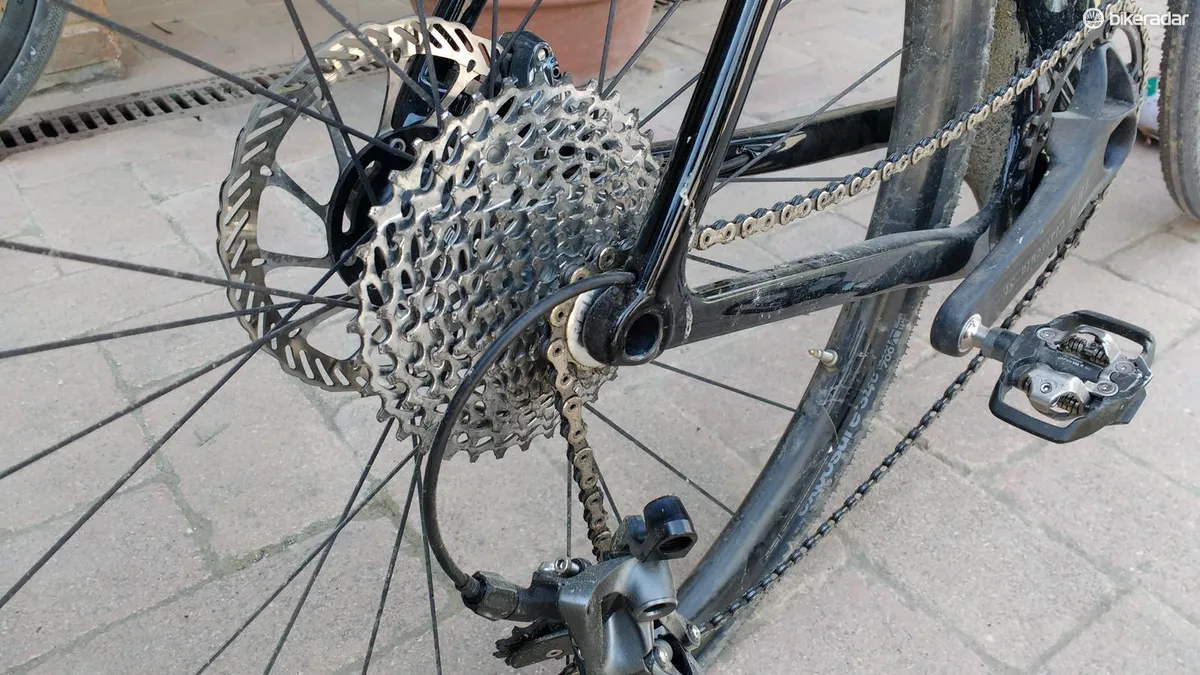
Build: the Force awakens
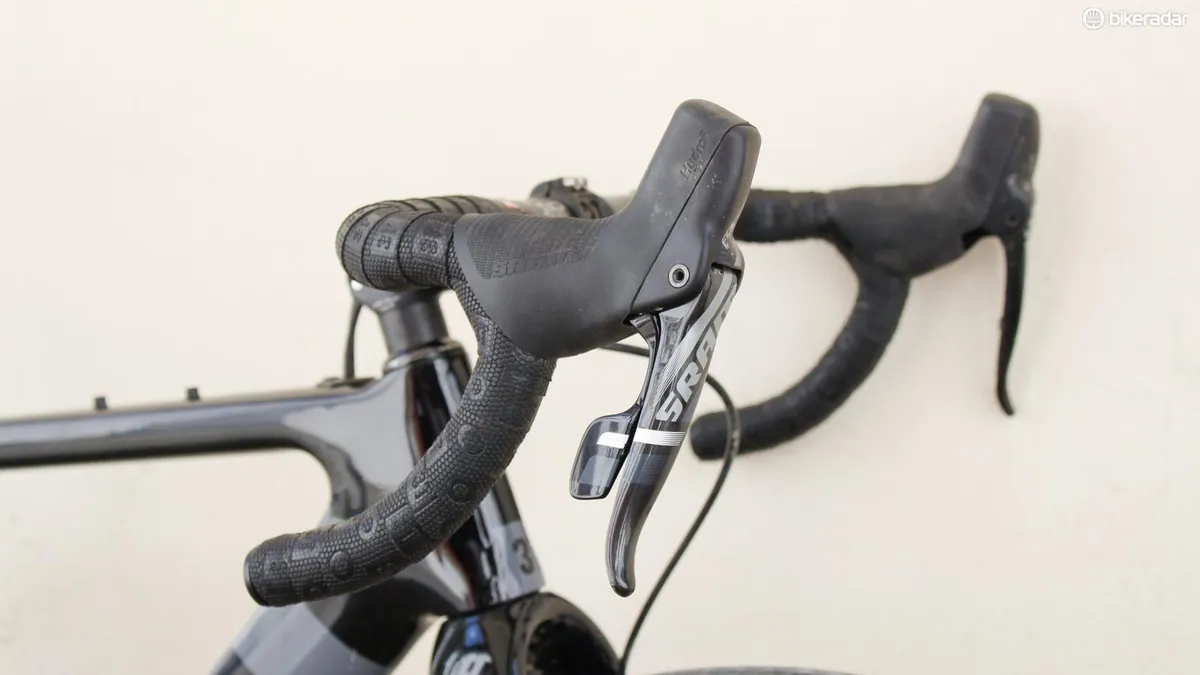
3T supplied Exploro test bikes built up with SRAM Force 1 components, along with some very high-zoot Clavicula SE cranks from new acquisition THM-Carbones. While some of the testers sported knobbly, skinnier 29ers, my bike was fitted with 3T’s brand new 650b alloy wheelset, the Discus Plus C25 and some balloon-like 47mm WTB slicks which turned out to be ideal for the riding ahead. The build weighed a claimed 8.2kg which we weren’t able to verify, but which we have no reason to doubt.
Ride and handling: an all-road enigma
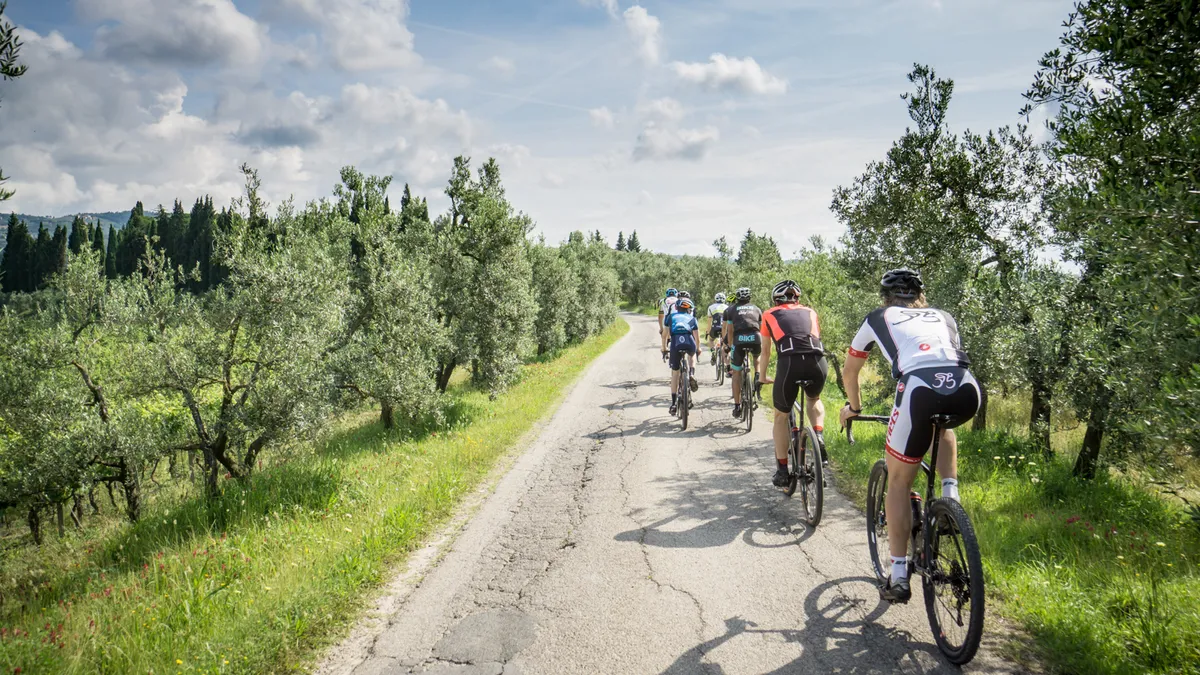
Under the guidance of peloton strongman Magnus Backstedt and a rather muscular local chap with an intimate knowledge of the local trails, my fellow journalists and I got a taste for the Exploro over 38km or so of very mixed Tuscan terrain. Not a lot, I hear you cry, but we managed to squeeze in well over 800m of climbing, and it was bloody hot. So there.
Even as I was hopping over drainage channels and kicking up clouds of dust, I was conscious that I was essentially riding a road bike with massive tyres
We started on tarmac, but quickly strayed onto the gravelly tracks that criss-cross the rolling vineyards and olive groves surrounding our base in Artimino. On the smoother sections the Exploro flies like the road bike on steroids it really is, and there’s a perverse pleasure in tackling rocky descents aboard a machine that feels so familiar to a roadie like me. There are limits however, and with the only suspension coming courtesy of the tyres, there were a few 'exciting' moments at speed where the knocks coming through the frame and fork threatened to send bike and rider their separate ways.
Along the way we covered everything from conventional road riding (including what I think is the steepest climb I’ve ever ridden up to an ancient-feeling hilltop town) to a spot of trail-bashing that would be considered tame by gnar-bro standards, but which you’d certainly never attempt on a road bike.
As is so often the case, the limiting factor was the rider more than anything else, but even as I was hopping over drainage channels and kicking up clouds of dust when I forgot the brakes were backwards (thanks guys!), I was conscious that I was essentially riding a road bike with massive tyres. I was loving every minute of it, but wondering at the same time if any of it made sense.
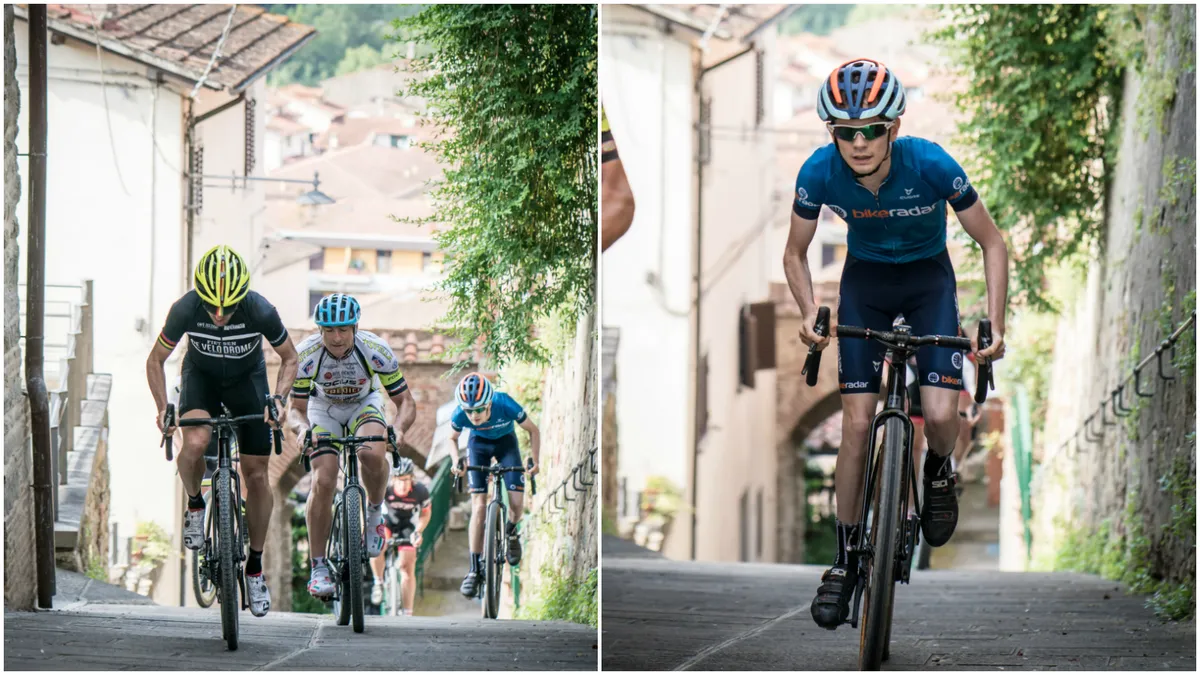
The steering is very quick, and despite the short wheelbase, descending on tarmac was brilliant – the amount of rubber on the road is hugely reassuring and the flickable front end really does allow for very rapid changes of direction. That massive bottom bracket doesn’t given an inch, so climbing is a pleasure too, and I certainly didn’t have any complaints about comfort, although I’d need to try the bike on skinnier road rubber to pass judgment properly on the frameset’s vertical compliance. Those fat slicks are a good compromise option, at least for the riding we were doing. They roll very quickly on the road, and their huge volume gives you lots of latitude for fine-tuning pressures to suit your riding (I’d definitely run them tubeless, by the way). Off-road they were a mixed bag: on dusty, Strade Bianche-style roads they didn’t offer a lot of traction, and climbing was a case of staying in the saddle and pedalling as smoothly as possible to minimise wheelspin.
Deeper gravel required care too, as the balloon-like profile doesn’t so much cut through the loose stuff as float over it. On rocky single- and doubletrack, they coped fairly well, although I’m pretty sure some of the rougher sections we bounced through would have been much sketchier had it rained.
Final thoughts: it's mad, but I like it
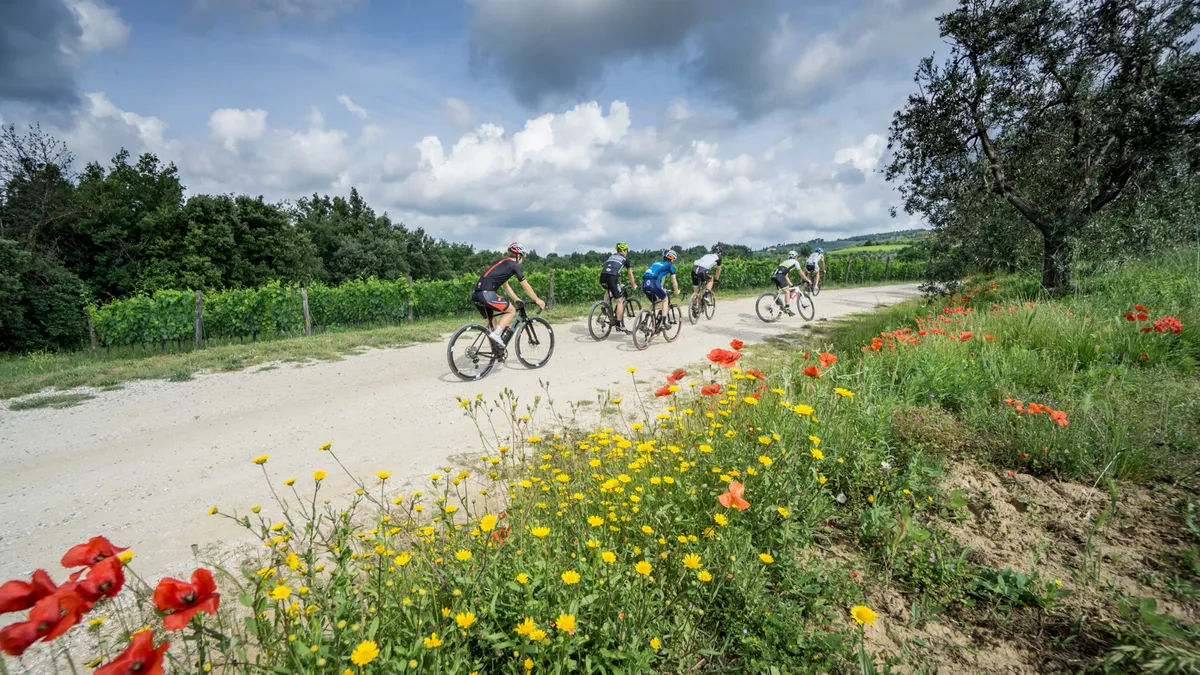
I’m still not really sure if the Exploro entirely makes sense as a concept, but on the roads and trails we were riding, it was a lot of fun. We can argue ad nauseam about the usefulness of aero gains on a bike like this, but free speed is free speed, and there are doubtless hardcore gravel racers out there just itching to geek out about aerodynamics.
This is an agile, engaging ride on the road that doesn’t feel too compromised with the right rubber, and off-road it’s amazing what that extra tyre volume can do. 3T’s approach to geometry is a bit of a head-scratcher – the logic behind it is sort of plausible, but it runs completely contrary to industry trends, particularly on the MTB side where the typical trail machine has got ever slacker and more stretched out. Comparisons will naturally be drawn with Cannondale’s 650b Slate, but while the overall concept is similar, the philosophy behind it is rather different – we’ll need to do a head-to-head test when we get the chance.
Whether or not the Exploro is of interest to you will likely depend on exactly what sort of riding you do, and of course whether you're prepared to drop some fairly serious coin on a rather left-field bike. It's not a replacement for a mountain bike, but it will take on terrain that's far beyond the reach of a conventional road machine, while still being plenty of fun on blacktop.
Specification
- Weight: 8.2kg (unverified)
- Frame: 3T Exploro LTD (M) full carbon, BB386EVO bottom bracket
- Fork: 3T Luteus II LTD, 15mm thru-axle
- Seatpost: 3T Charlie Sqaero
- Handlebar: 3T Ergonova Team Stealth
- Stem: 3T Arx Team II
- Levers: SRAM Force HRD
- Rear derailleur: SRAM Force 1
- Brakes: SRAM Force HRD, 160mm rotors
- Cranks: THM Clavicula SE, Wolftooth Components 38t chainring
- Cassette: SRAM 11-36t
- Chain: SRAM PC-1170
- Wheels: 3T Discus Plus C25 Pro, 142x12 rear
- Tyres: WTB Horizon 47mm 650b
- Saddle: WTB
